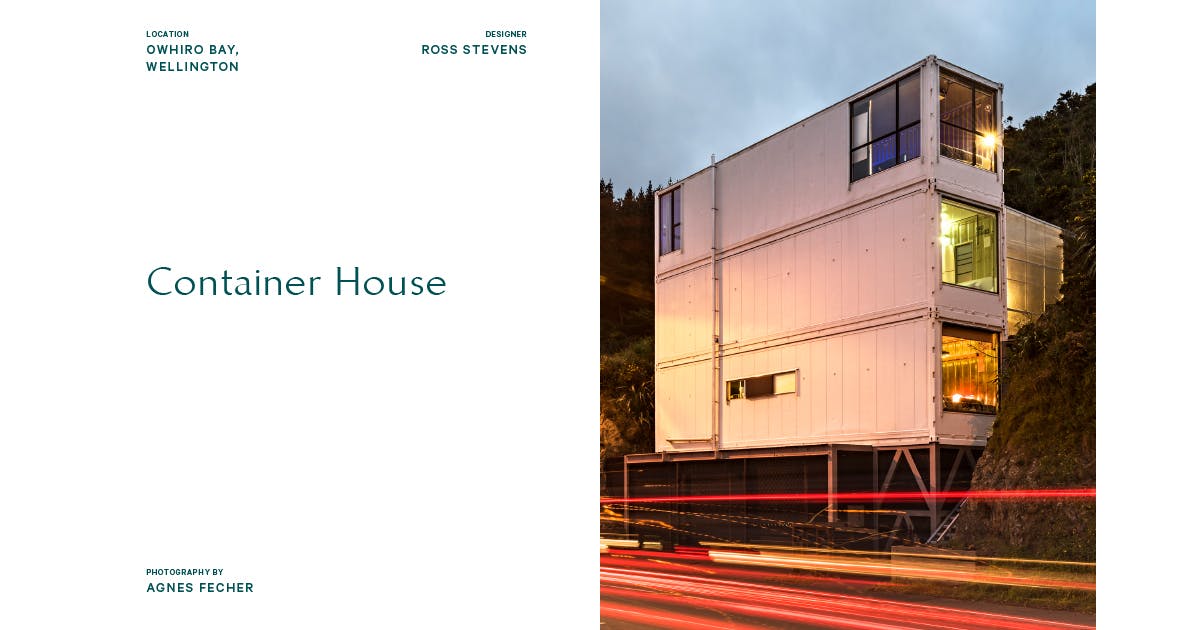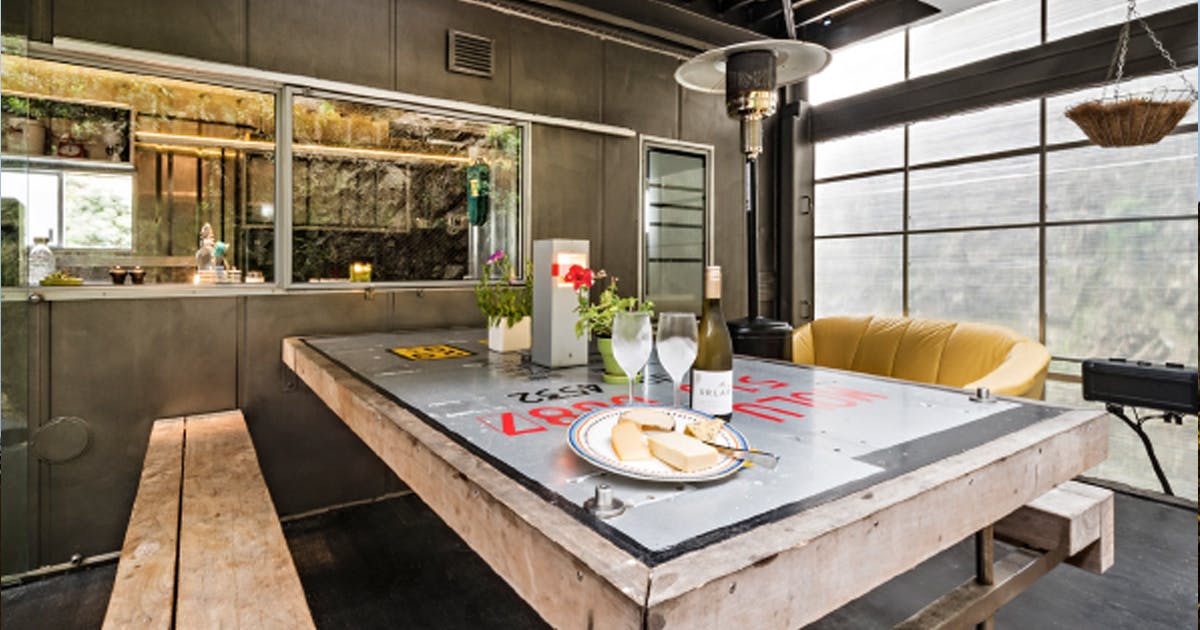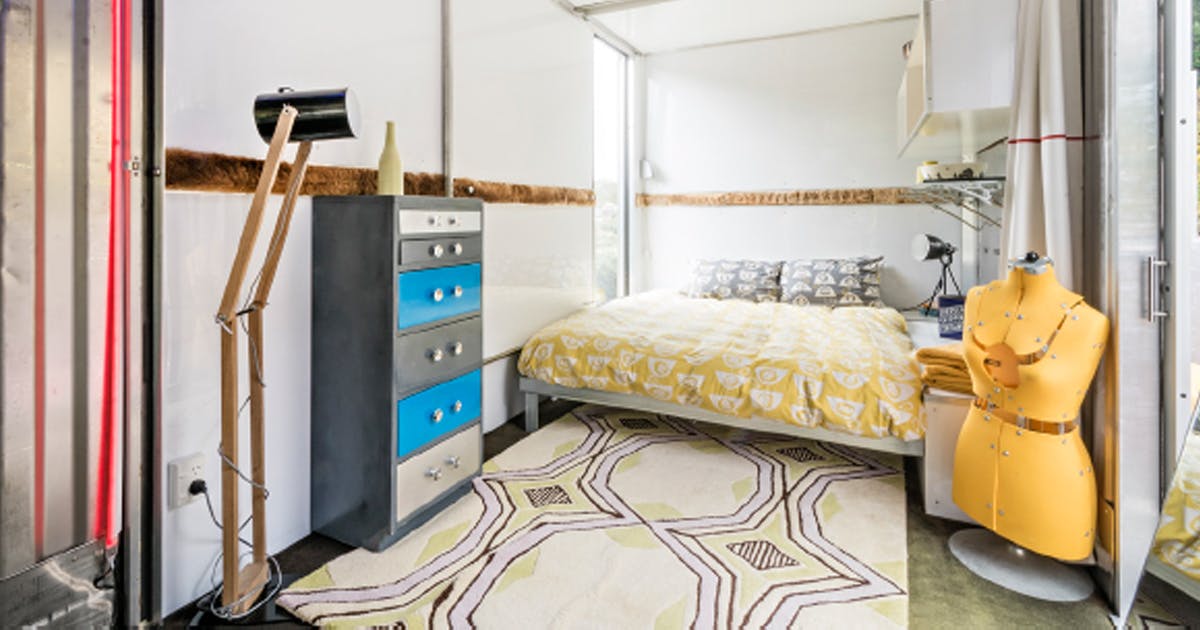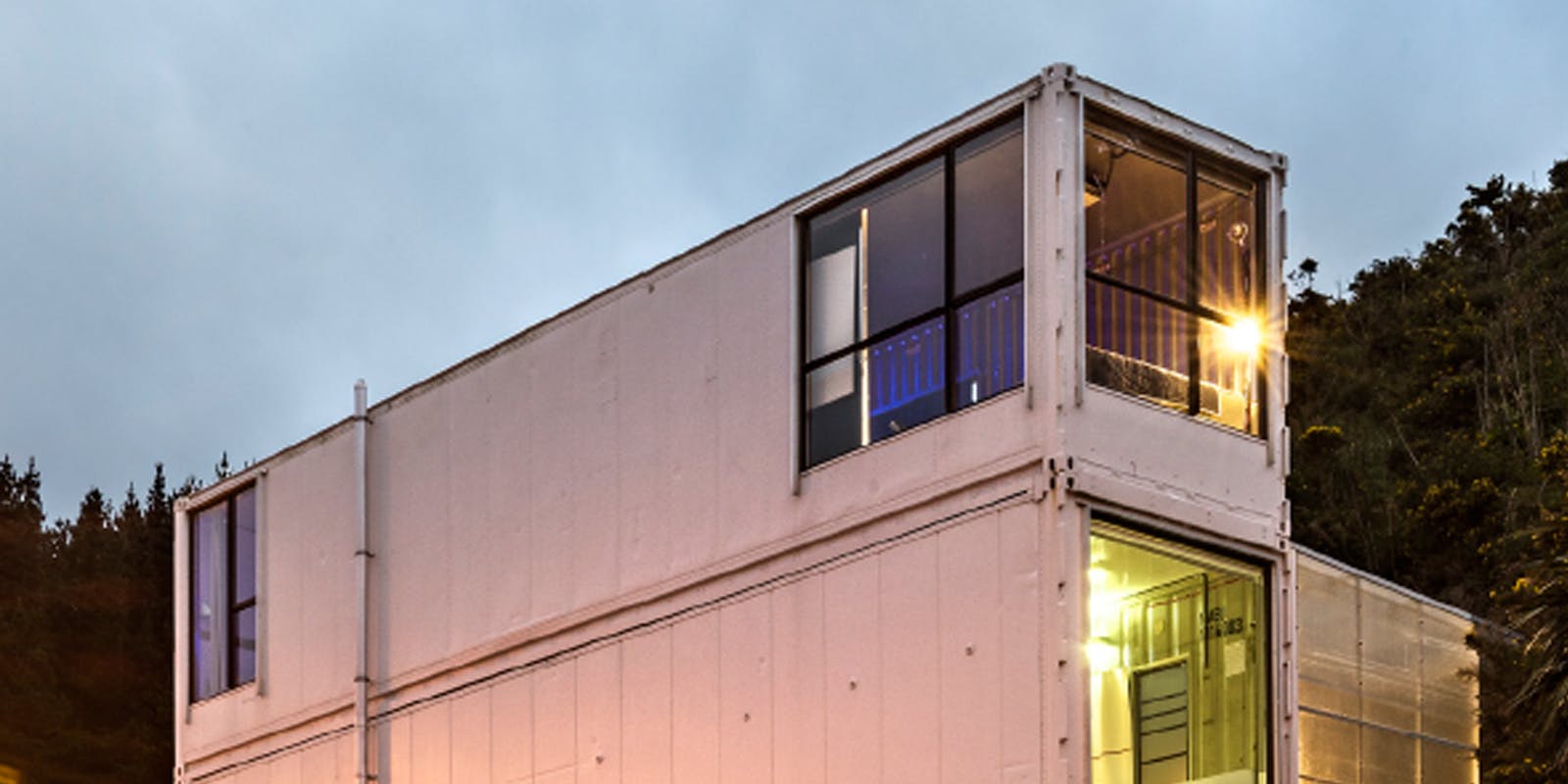A sneak peek inside the world-famous Container House located in Wellington's Owhiro Bay.

Combine an industrial designer hungry for international recognition and the sort of heavy-duty industrial materials seldom seen outside an industrial breaker’s yard, and you get Wellington’s world-famous Container House — an example
of container housing as eye-catching and uncompromising today as it was groundbreaking when it was first built almost twenty years ago. Industrial designer and educator Ross Stevens, programme director for industrial design at Victoria University’s School of Design, admits that while producing internationally significant work was one of the drivers behind the project, it was by no means the only, or even the most important. ‘Pragmatically it was a way to house us, but it
was as much about getting to an interesting outcome on a very difficult site. I treated it a bit like cooking with seasonal vegetables — every response had to be flexible in terms of the challenges the site presented — and along the way I fell in love with architecture.’
Familiar with large-scale industrial materials and techniques, Stevens — a first-time builder — was less daunted by the challenges of building alongside an unstable hillside with a
45-degree slope than might have been expected. ‘I knew that shipping containers are immensely strong. Each one weighs about two-and-a-half tonnes and they’re designed to be stacked up to eight high, so the ones lower in the stack carry a huge load, even when empty. They were the perfect component to cope with the possibility of rockfall from the hillside behind.
I chose smooth-sided pre-insulated ones, partly because I liked the look and partly because the insulation indicated they’d only ever been used for transporting foodstuffs, and therefore toxic contamination wasn’t something to worry about.’

Perfect, too, was the repurposed sectional crane that became the super-strength foundations. ‘Industrial-scaled waste materials have very little resale value. They’re huge and dauntingly difficult to handle, and as a result no one wants them. We paid $300 for the crane on the condition we just got it out of everyone’s way.’
Anchoring the strongly engineered sections of the crane to provide deep foundations for the elevated platform upon which the three containers would be stacked had a dual purpose. Not only would the space underneath provide covered parking and storage, but the fact that the building itself was raised meant that it was relatively immune to rockfall — a serious consideration when building on this kind of site in an earthquake zone. Once big issues like these had been solved, making best use of the long narrow dimensions (2.3m x 12m) afforded by the containers was comparatively straightforward. Once again, Stevens exercised pragmatism. ‘It’s the seasonal veggies again — and as containers have long, narrow dimensions it was chiefly about how to maximise the flow without compromising the comfort. Leaving the staircases external (and uncovered) between levels one and two made for more useable interiors, especially in the living area, and when the backs of these two levels were opened out onto decks that straddled the area between the structure and the mountainside, it was a solution that meant none of the spaces felt compromised — either visually or practically — by being narrow.’
Kitchen and combined living and dining spaces fill most of the first storey and this opens out to a deck made from perforated 50mm-thick mild steel. Levels two and three house three bedrooms and a bathroom, with more outdoor living leading off from the second level. This deck provides weather cover and a safety shield for the outdoor living area below. The third level — the ‘penthouse suite’ — has windows to both front and rear. Stevens admits that initially ‘it was very much about keeping the outside world out — presenting a fortress-like façade to the world — but now I’m mellowing. I painted it white before we sold, partly for better heat control, but also I didn’t feel it had to be so staunch any more. It did that in its forms — it didn’t have to do it in its colour palette.’

But the love affair has never quite gone away, even now that Stevens has moved on to new challenges in the Wairarapa. Now immersed in the construction of a long-term family home, which like the Container House will be built almost entirely of discarded industrial materials, he acknowledges his first leap into architectural design was integral to this new project. ‘It taught me a lot. When you have a really radical experiment like that, it really opens up the possibilities. I learnt that everything had a solution — it just had to be found.’
DESIGN NOTES
- Recycling a hugely strong sectional crane — originally used in the erection of skyscrapers — was an inexpensive way of creating robust, deeply anchored foundations for the platform on which the whole structure sits. The space created underneath the building is only lightly used as garaging, leaving the living spaces above safe from rockfall from the cliff behind.
- The staircase between levels one and two is external to make best use of narrow internal spaces, but there is an internal spiral staircase between levels two and three.
- Using refrigerated containers not only cut down on fit-out costs, but also ensured that toxic materials would not have been transported in the containers in their previous life.














